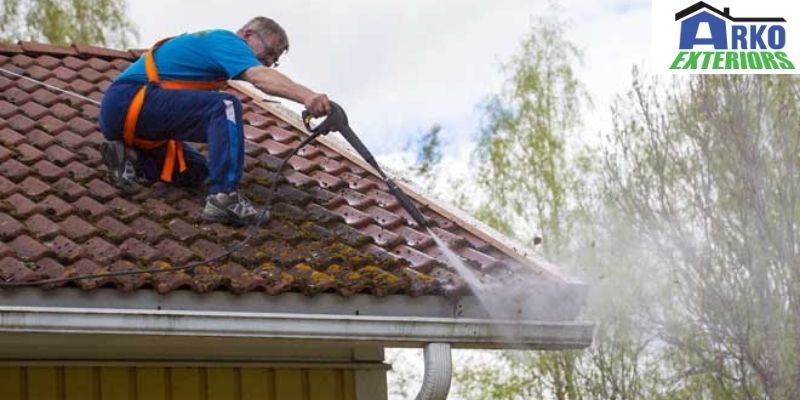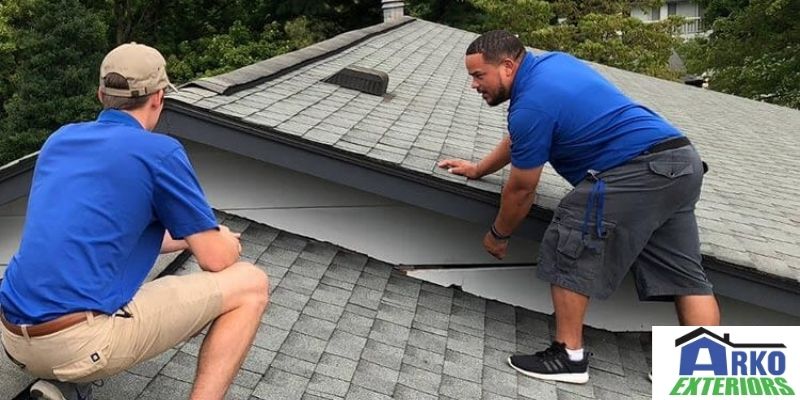If you own a home, you know that the roof of your house is one crucial component that requires maintenance. It provides protection and insulation, so it should be cared for. This is because the safety of you and your family will be ensured when your roofing system is in good condition.
Best Tips For Keeping Your Roof In Great Condition
Your roof is an essential part of your house because it protects and keeps your home safe. You should maintain it to ensure that it remains in tip-top shape.
Here are some tips to help you keep your roof in great condition:
1. Clean the roof regularly

You should clean your roof regularly as that is one factor that determines its functionality. Moreover, it will help you spot potential issues and also prolong the lifespan of your roof. The best time to clean your roof is in the autumn or spring. You can use these seasons to keep your roof free of lichen, algae, moss, debris, and other elements that could cause potential damage.
Washing your roof is a good idea at certain times of the year. Make sure to use a pressure washer with a nozzle that is at least at a 30 degrees downward angle when washing your roof. Ensure that you always work from your rooftop to prevent water from leaking into your shingles.
2. Clean gutters and downspouts regularly
Your gutters can still get clogged with debris and leave even if you clean your roof regularly. Water will not be able to easily flow off your roof, and clogging can be a problem. This is why you should regularly clean your gutter’s downspouts every six months.
You can also consider investing in gutter protectors to keep your gutter system clean. You can hire a professional gutter cleaning service to install these.
3. Ensure that your roof has proper drainage
In addition to cleaning your roof, gutters, and downspouts regularly, you should make sure that there is no problem with the drainage system of your roof. A pool of water on your roof is a sure sign of a drainage issue with your roofing system. If this is the case, you should ask a professional to check it out. Doing so will ensure that water damage does not eventually cause further damage to your roof and all it protects.
4. Trim overhanging branches
Falling branches can damage your roof. Trimming branches away from your house is one of the best tips for ensuring that your roof remains in good condition. It also prevents leaves and small branches from clogging your gutters and removes the possibility of falling branches causing damage to your shingles.
You should hire a professional if you are not comfortable trimming the branches yourself. Additionally, call for residential storm damage cleanup if you live in areas with stormy weather. Their services may include the downing of tree branches.
5. Inspect your flashing
The roof flashing of your house is the component that helps in sealing off curves and gaps. It helps prevent water from entering the house. You should always check the condition of your roof’s flashing when inspecting your roof. Check for existing rust or new cracks in the metal sheets of your roof. Additionally, look for areas that are lifting or where the sealant is lacking. To avoid further damage, immediately correct any defect you find in the flashing. Furthermore, check and repair the sealant every year. This will give you the guarantee that the flashing of your roof will protect your home from leaks.
6. Regularly check for damage and leaks
Regularly checking your roof for damages or leaks is the best way to know if it is in good condition or not. Always check your roof after strong winds and heavy rainfalls. You should contact a professional immediately if you find any problems. Roofing professionals will help you fix problems as soon as possible. They will also give you additional tips to prevent a similar occurrence of similar damage in the future.
7. Inspect your roof every season
The weather for each season is different. Every season brings along different issues for your roof. For instance, there are snowstorms that come with the winter season. The possibility of leakage is increased in winter because of melting snow. In contrast, the summer months mean the risk of hurricanes, tornadoes, and/or exposure to excessive heat.
You should inspect the roofing materials of your home throughout the year. Check the roof for signs of damage or extreme corrosion. Note missing parts and components that need replacement. Additionally, inspect the sealant across the gutter and flashing as well. You should also know that there is a possibility of material deterioration in areas beneath your roof where you find algae or moss. Immediately address any concern you notice to avoid further damage.
8. Schedule roof inspection

There are specific aspects that should be handled by professionals, and an annual inspection of your roof is one of them. As a homeowner, there are certain steps you can take that may include keeping dirt off of your roof and checking for obvious damage regularly. However, there are many aspects to inspecting your roof that may go unnoticed.
A licensed roofing contractor is qualified to inspect your roof. With their skill and expertise, they will be able to perform specific checks to spot potential issues or hidden damages. Additionally, they will know the areas that need to be worked on to improve the condition of your roof.
Conclusion
Proper maintenance of your roof is essential for it to function properly. When your roofing system is efficient, it will perform well throughout its lifespan. Maintenance is key to achieving this, and it is essential to fix any issues you notice. This will prevent further damage and help keep your roof in good condition. Calling the professionals at Arko Exteriors to carry out regular roof inspection and maintenance activities is a great first step. These experts will help identify any damage in the early stages and help you save on costly repairs in the long run.

